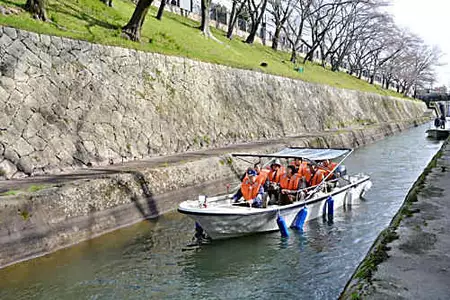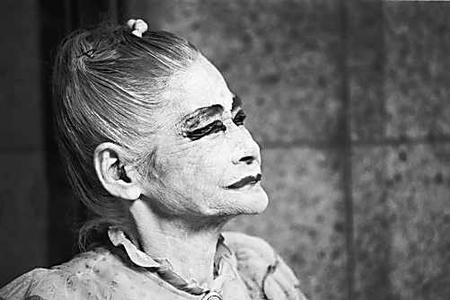The government’s bid to have a sacred area in western Japan registered as a UNESCO World Cultural Heritage site is being challenged by those who claim it reinforces gender discrimination.
Kiisanchi no Reijo to Sankeimichi (Sacred Sites and Pilgrimage Routes in the Kii Mountain Range and Surrounding Cultural Landscapes) has been proposed by the government to the United Nations Educational, Scientific and Cultural Organization as a candidate heritage site.
The area encompasses the holy sites of Yoshino-Omine, Kumanosanzan and Mount Koya, and straddles Nara, Wakayama and Mie prefectures.
If all goes as planned, the site will be listed at the World Heritage Committee meeting in China in June.
Since ancient times, the site has been sacred both for Shinto and its nature worship, for Buddhism and for Shukendo, a religion that evolved from both Shinto and Buddhism.
It is this unique religious fusion and the well-preserved pilgrimage paths that make this such a special site, according to the Cultural Affairs Agency.
At present, there are 754 World Heritage sites, of which 582 are cultural, 149 natural and 23 a combination of the two. Japan has 11, including nine cultural sites and two natural ones.
But some citizens’ groups oppose registering the Kii Mountain Range as a UNESCO site, because a 10 km × 24 km area of the 495.3-hectare site that features Mount Omine and Ominesanji Temple is out of bounds to women.
At each entrance to the four mountain paths that lead to Ominesanji Temple are gates that forbid women from passing. Adjacent bilingual signs reinforce this regulation, which is rooted in religious tradition.
Masao Yamaguchi, a 64-year-old mountain-trekker from Nara, said he feels ashamed to be a Nara citizen, as the prefecture has failed to address this discrimination.
In protest, he sometimes treks up Mount Omine dressed in women’s clothing, wearing his wife’s red suit, makeup, earrings and a necklace.
In 1999, he and 13 female schoolteachers made headlines when they went up the mountain together, with Yamaguchi disguised as a woman.
“The women were criticized in newspapers for infringing on the rule as teachers,” he said. He added that priests who saw him debated whether he was a man or a woman.
“I said to them in falsetto, ‘Does it matter if I’m a man or a woman?’ ” he explained.
Junko Minamoto, a researcher at the Institute of Human Rights Studies at Kansai University and a corepresentative of a group that challenges the ban, said that before the area is made a UNESCO heritage site, there are issues that must be addressed.
While a listing of this kind would likely boost awareness of the site around the globe, the group claims the move would hurt Japan’s image and tourism in the region.
On April 9, 271 members and supporters of the group — including researchers, lawyers and lawmakers such as Social Democratic Party leader Mizuho Fukushima — handed a petition to Prime Minister Junichiro Koizumi asking that the ban be lifted.
The petition, featuring 12,314 signatures, will also be handed to other related parties, including the temples and followers at the holy sites, local people and UNESCO.
The group claims the ban violates the U.N. Convention for Elimination of All Forms of Discrimination against Women, which Japan ratified in 1985, and the basic law for a gender-equal society, which the nation enacted in 1999.
According to Minamoto, who is an expert on women’s issues and religious thought, many mountains in Japan, including Mount Fuji and Kyoto’s Mount Hiei, were previously off limits to women. The sites were considered sacred, while women were viewed as impure.
But an 1872 government ordinance lifted some of these prohibitions, with the Meiji government fearing criticism from foreigners who were expected to visit Japan for the country’s first exposition, in 1876, she said.
Currently, Mount Omine and Mount Ushiro in Okayama Prefecture maintain a permanent ban on women, while others, including Mount Ishizuchi in Shikoku, ban women on certain days of the year, she said.
While most temples and followers in the area oppose lifting the ban, Tainen Miyagi, second head priest at Shogoin, another influential temple in Kyoto, said it should be lifted.
“In the Meiji Era (1868-1912), all religious strictures on Mount Omine — the ban on women and alcohol, and other sacrifices, including abstaining from eating fish and meat — were strictly followed,” he said.
“Now, only the ban on women persists, while more and more women are engaged in strenuous ascetic training. We can no longer say no to one side.”
But Mitsuru Inose of the industry and tourism department of the Tenkawa village office, located on Mount Omine, said the ban is a religious precept that cannot be violated.
“This is something we cannot touch because it’s a religious matter. The citizens’ group is completely dismissing the rule of a religion that dates back 1,300 years,” he said.
Minamoto claimed, however, that it is clear the ban is not based on religion.
“Years ago, there were also restrictions on men — that only those under ascetic training could enter the holy areas. Now, any man is allowed in,” she said.
One reason for the ban is the “impurity” associated with the shedding of blood during childbirth and menstruation, while women are also said to distract men’s ascetic training — indicating they are primarily seen as sex objects, she added.
Women are also banned from the Mount Atos heritage site in Greece. While the European Parliament adopted a resolution in 2003 stating that the ban runs counter to the equality of gender and people’s right to move freely in the EU, priests rejected these claims on the grounds that the government granted the area autonomy in 1926.
Karalyn Schenk of the UNESCO head office in Paris said UNESCO does not require or guarantee that all sites have unrestricted access.
“Some sites have limited access for spiritual reasons, which are often important to the universal value of the site,” she said in an e-mail, adding that parts of the Kakadu National Park in Australia features areas that are accessible only to initiated men, while other areas are only accessible to women.
Yasunari Tanaka, an official at the Cultural Affairs Agency, said the site matches the UNESCO criteria of having an outstanding universal value and that it can be adequately preserved by the state, which are the main issues.
“Its purpose is not to lure tourists,” he said.







 Click to enlarge
Click to enlarge









